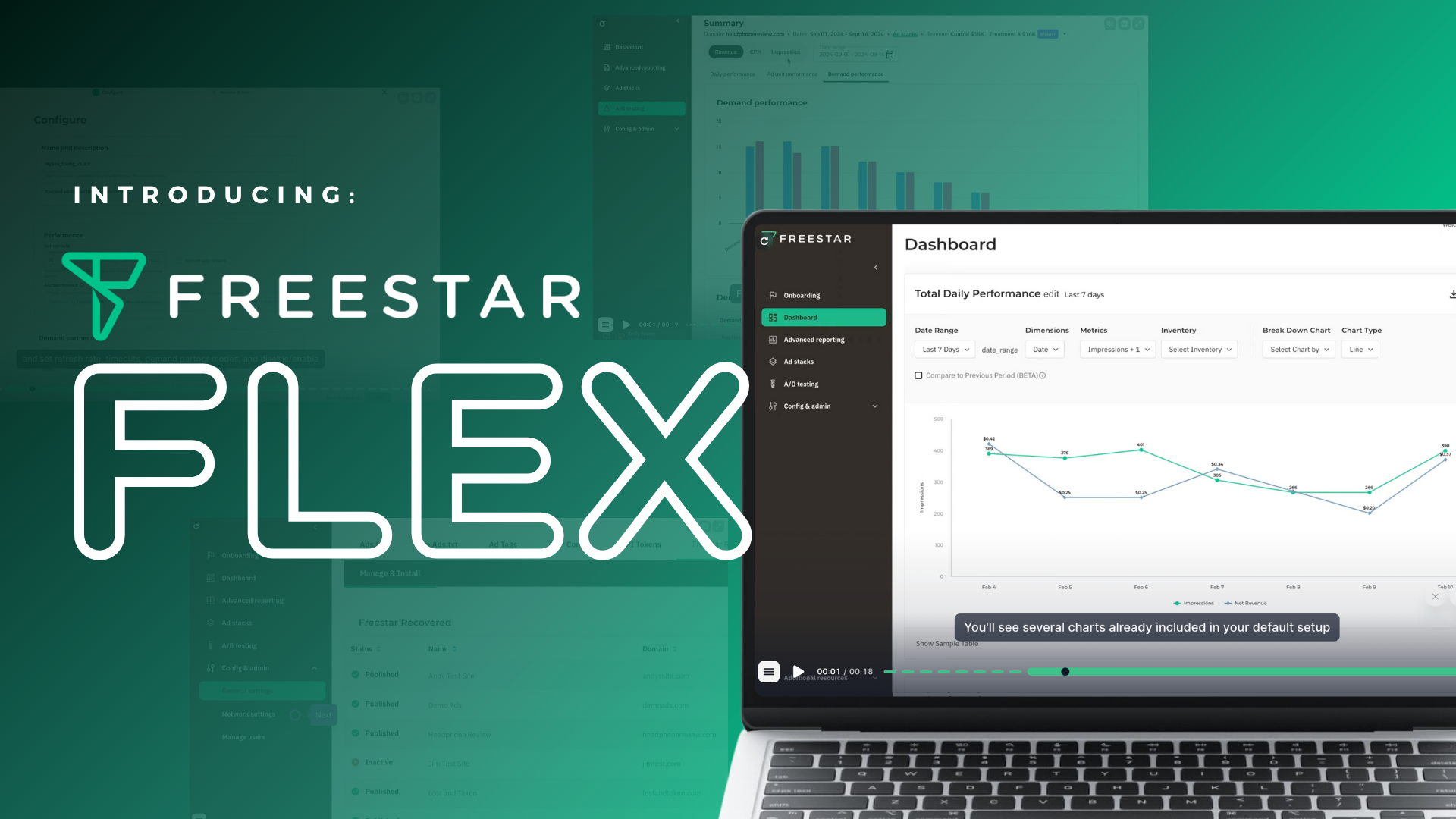Email newsletters have been the long reigning champions of brands throughout multiple industries when it comes to encouraging direct connections with customers. While email serves as a great way to distribute content, its powers go beyond entertainment and informing the masses — it’s also an advertising powerhouse.
By using email as a direct channel for newsletter advertising, brands are able to not only create relationships with new customers but deliver exponential value throughout each customer journey by ensuring a more unique and individualistic advertising experience.
If you haven’t tapped into advertising via email newsletters or if you have but haven’t gotten the hang of it yet, you’re in the right place. In this article, we’re going to cover everything you need to know about advertising in email newsletters and then some.
Then and Now: A Brief History of Email
Let’s take a moment to see how far we’ve come from the first email ever sent.
Believe it or not, the first email to ever exist was sent before the 90s. In fact, the famous America Online (AOL) got started in 1985 — but the first email ever sent was in 1971 by the computer engineer Ray Tomlinson.
Not too long after, a marketing manager by the name of Gary Thuerk sent the first ever commercial email. Thuerk’s commercial email went out to a 400-person list, which generated upwards of $13 million in product sales for his company: Digital Equipment Corp.
As you can see, email and email marketing isn’t really anything new. At least not newer than the concept of email itself. However, it has evolved significantly since its humble beginnings — as have content consumption habits. Thanks to the rise of mobile and other smart devices, faster and more seamless means of communication have unlocked a new way for people and brands to do business.
Today, the average American spends up to three hours each day sifting through their work inboxes and then another two hours tending to personal emails. That’s not even including regular content consumption. With mobile devices becoming more sophisticated as the months pass by, so have the ways in which brands connect with their audiences.
This is largely because people now reach for their smart devices to check their inboxes and other media channels to access the information they’re looking for. In fact, more than 60% of all consumers state that they’d prefer email as the method that their favorite brands use to communicate with them. This tells us that email isn’t going anywhere as it only strengthens the brand to consumer relationship.
What Exactly Is Email Newsletter Advertising?
Now here we are in 2022, with email newsletter advertising in full swing and thriving. But what exactly is email newsletter advertising?
While terms like ‘email advertising’ and ‘email marketing’ are used interchangeably, they’re actually two very different things.
Here’s the breakdown:
When we talk about email marketing, we’re talking about the use of proprietary email messaging to connect with existing contacts via a subscription list. For example, if you’ve ever sent an email out to your customer contact list or potential customers that came from your Customer Relationship Management (CRM) database, then you’ve used email marketing as your strategy.
Email advertising, on the other hand, is a subset of paid advertising. It exists to enable brands to further reach their target audiences outside of (or in addition to) their current CRM database. In other words, the consumers receiving these advertisements have consented by actively signing up to receive them.
With email newsletter advertising, brands and advertisers can access premium ad inventory through reputable publisher newsletters, including the likes of The New York Times and other authoritative sources that nurture higher levels of trust and attention.
The Unique Benefits of Email Newsletter Advertising
No marketing or brand awareness campaign would be complete without email newsletter advertising. This is because email newsletters offer certain benefits and advantages that most of the other marketing channels do not.
Benefits and advantages:
You Get in Touch With Real Audiences
Behind every email newsletter is a subscriber who has logged into their email account and actively consented to receiving your content and messaging. This means that not only will you reach your target audiences almost 100% of the time but you also won’t have to worry about bots or ad fraud when connecting via email.
Therefore, brands and advertisers can breathe easy knowing that they’re reaching real people and in a more premium environment (aka, and more well-receiving environment since the email newsletters are both expected and desired).
More Engaged Subscribers
As mentioned above, email newsletter campaigns involve a premium environment, meaning that the people receiving the emails actually want to receive those emails. Hence the reason they opt into the emails by signing up for the subscription.
Because of this, the target audience in question will be more likely to engage with your content and ads compared to when they’re on a website with disruptive pop-ups and banner ads. In fact, they’ll be 16 times more likely to engage with your emails.
Optimal Visibility
One of the best things about email newsletters (for the viewers) is that they’re far less cluttered compared to other advertising channels. For the advertiser, this allows your content and messaging to really stand out.
When you have email newsletter ads placed above the fold and at the top of the newsletter they’re positioned to be even more visible. There are also more ways to get even greater visibility, but we’ll talk more about that later.
It’s Private and Secure
Email newsletters don’t use third-party cookies for their audience segmentation or targeting. Instead, they used hashed emails — which is the use of an email address that runs through a hashing algorithm.
The hashing algorithm works by returning a series of characters that are unique to each specific email. Each time an email address is run through the hashing algorithm, the algorithm returns the exact same unique value. What’s more, hashed emails cannot be cracked or reversed to show the user’s personal email.
The email hash offers advertisers a method of audience targeting that’s also privacy safe. With the email newsletters, consumers have to consent to the use of their email address, which adds another layer of privacy.
Email newsletters are also completely cookieless — as in data cookies. This means that newsletter advertisers remain mostly unaffected by third-party cookie deprecation. Some email monetization services like LiveIntent use tags to connect with third-party cookies to improve campaign performance, increase conversion, and provide advanced reporting.
It Furthers Your First-Party Data Footprint
Put simply, third-party cookies aren’t the most popular among advertisers, publishers, and consumers alike. That’s why they’re on their way out, which means that first-party data is going to become even more critical to the survival of advertisers in a cookieless-world.
Email addresses are considered first-party data. Since email newsletters specifically leverage email addresses, brands and advertisers can use email newsletters to grow their inventory of first-party data.
Depending on the email newsletter advertising partner you choose, you can gain access to an entire world of audience engagement data. It’s especially beneficial to go with a partner that utilizes cross-device engagement, campaign engagement, customer lifetime value (LTV), and log-level exposure data. These are the valuable insights that you can leverage best for retargeting, audience expansion and much more.
Deterministic ID
When we talk about deterministic data, we’re referring to the information that is both true and accurate because it’s supplied directly by the people it relates to. In other cases, it’s personally identifiable, such as a name or email address, and it’s considered authenticated data because of this.
Deterministic IDs are perfect for creating audiences and ultra-targeting strategies because, put simply, people don’t typically share their email addresses to avoid spam and annoying adverts. Therefore, any activity and data that’s tied to an email address, like an email newsletter subscription, purchase, etc, directly represents an individual’s consumer habits. This enables brands to create more rich and accurate consumer profiles, even in cross-device environments.
How to Buy Email Newsletter Ad Inventory
By now you can see just how email newsletters are a near-perfect advertising channel. Of course, before you go launching your next campaign, you need to select the right ad inventory and where to buy it.
You can buy email newsletter advertising inventory through several channels, including programmatic direct deals, private marketplaces (PMPs), and even on the open exchange. In order to choose the right way to buy your inventory, you’ll need to understand the advantages of each so you can figure out what will suit your brand, campaign goals, and budget best.
Here’s the breakdown:
Programmatic Direct Buys
When it comes to programmatic direct buying, you can purchase your email newsletter inventory directly from specific publishers. This creates a more personal relationship between the advertiser and publisher, and it’s also the type of arrangement that allows you to buy inventory as either part of a guaranteed or non-guaranteed deal.
With guaranteed deals, the publisher guarantees the advertiser a certain number of impressions for a predetermined and set fee for a period of time.
With non guaranteed deals, the arrangement forgoes a specific timeline and sets a budget for particular impression goals. These types of deals offer more flexibility, enabling advertisers to reach their impression goals without having to commit to an extensive fee.
Programmatic direct buys also typically involve publishers’ more exclusive newsletter inventory. Premium inventory are usually associated with higher fees (CPMs), however, it’s worth it as it creates a secure environment — especially for brand safety and more control over advertisement placement.
Lastly, programmatic direct buys also include Deal IDs. Deal IDs come from the publisher’s supply-side platform (SSP) which arranges ad buying deals that are specific to individual campaigns. From there, the demand-side platform (DSP) sets up the deal using the ID on their side, aligning both sides with specific terms and inventory. This works to guarantee the safety of the ad buying environment.
Private Marketplaces (PMPs)
Private marketplaces are another popular method for brands to buy email advertising inventory. PMPs work similarly to programmatic direct buys, only the method revolves around a direct relationship with just one publisher.
In lieu of a one-to-one exchange between advertiser and publisher, PMPs offer a one-to-many approach to email newsletter advertising. Essentially, a PMP enables advertisers to compete for the same inventory from a single publisher for a fixed amount within a private environment. The catch is that the publishers have to add the advertisers to their list to allow the DSPs to purchase the ad inventory they have listed in the PMP.
Compared to programmatic direct buys, PMPs enable advertisers to get their hands on premium inventory quickly, easily and usually at lower costs. With PMPs, advertisers with permission get frequent access to these inventory, which makes for a key source of targeted ad placement.
Open Exchanges
The open exchange is another great source for email newsletter ad inventory. Unlike PMPs and programmatic direct deals, open exchanges serve as public ad auctions. Therefore, there are no limitations for advertisers when it comes to entering into the bidding space. It also means there’s no need for a pre-arranged contract with publishers.
With open exchanges, inventory will always be available for advertisers, and they can bid on all types of ad qualities, making them the perfect environment for brands looking to get started quickly.
Open exchanges also offer more extensive inventory compared to the other methods of media buying, which means that brands don’t have to worry about losing out on their campaign scale when it comes to things like audience targeting, frequency capping, geo-targeting, and more. Another difference is that the CPMs in open exchanges are generally lower.
As for brand safety in the open exchange, advertisers can implement allow lists, block lists, contextual keyword targeting and other methods to add security. Either way, open exchanges offer the most accessible and affordable choices, making them best for newer brands trying to make a splash.
The Different Types of Email Newsletter Ads
You’ve likely come across your fair share of email ads in email newsletters. However, you probably never took notice of how the ads were displayed or thought about why they were displayed that way. Just remember, there’s always a method behind the madness, and in that madness there are two different types of email newsletters ads:
Custom Display Ads
Custom display ads in email newsletters are a lot like web display ads in that you can choose from various sizes to suit your display needs. You can also choose to animate them to further catch your viewers’ attention to drive more engagement.
Native Ads
Native ads are ad formats that blend in with their environments, making them less intrusive compared to the other forms of advertising.
Since native ads have a more seamless integration in email newsletters, readers won’t experience banner blindness or ad fatigue. This results in higher engagement rates compared to regular display ad formats.
How to Get Started Monetizing Your Newsletter
If you’re interested in monetizing your newsletters, please reach out to your Freestar Customer Success Manager and they can help with next steps. If you’re not a Freestar publisher, get started today!
Freestar is partnered with all of the major email monetization partners and can provide you with the best stack and tools available. We do all the heavy lifting so you can focus on what matters most to you.
Final Thoughts
Email newsletter advertising is one of the best ways to expand your brand’s reach while also maintaining control over your exposure. It’s also something that allows you to create the perfect audience for your brand messaging in order to achieve your campaign goals.
All you have to do is define your email newsletter advertising goals and the rest will fall into place regarding where to buy your ad inventory, which formats to choose, and more. You don’t want to leave this valuable resource untapped, so get to work!





